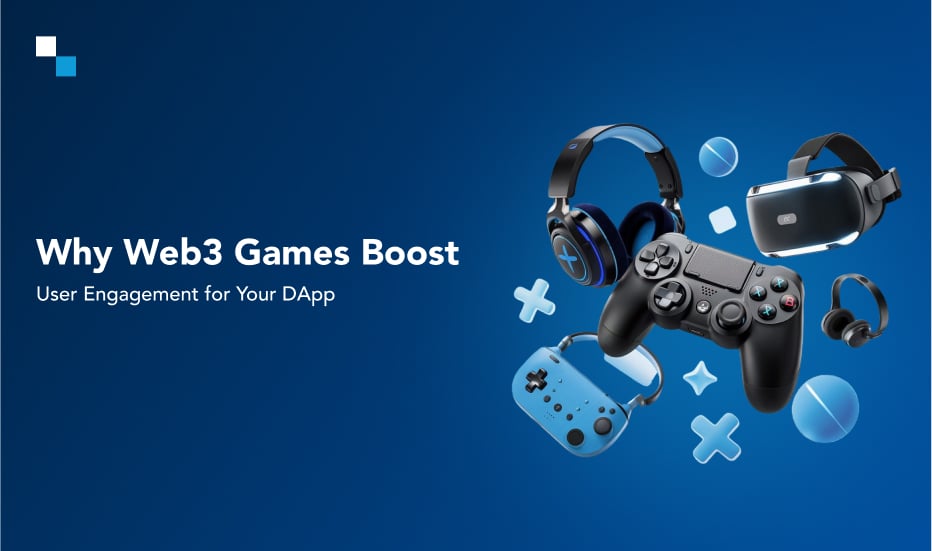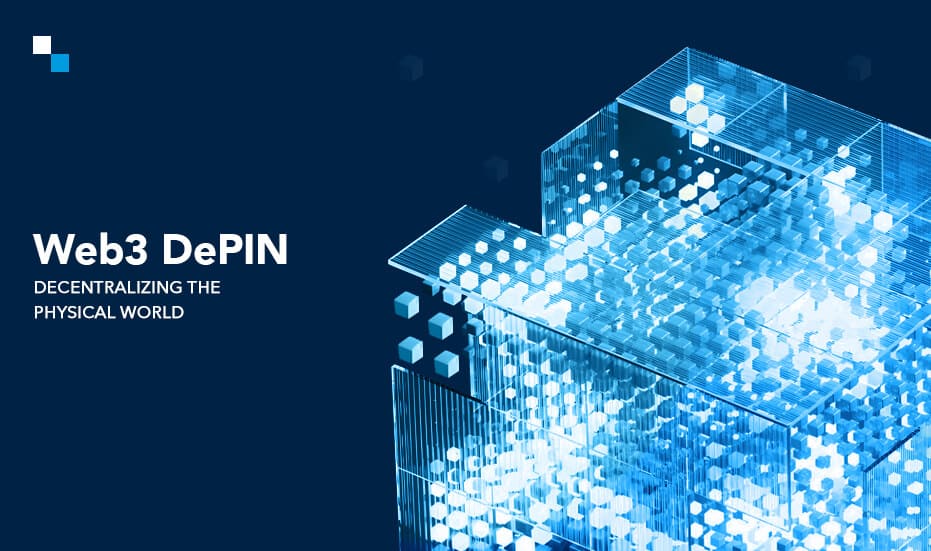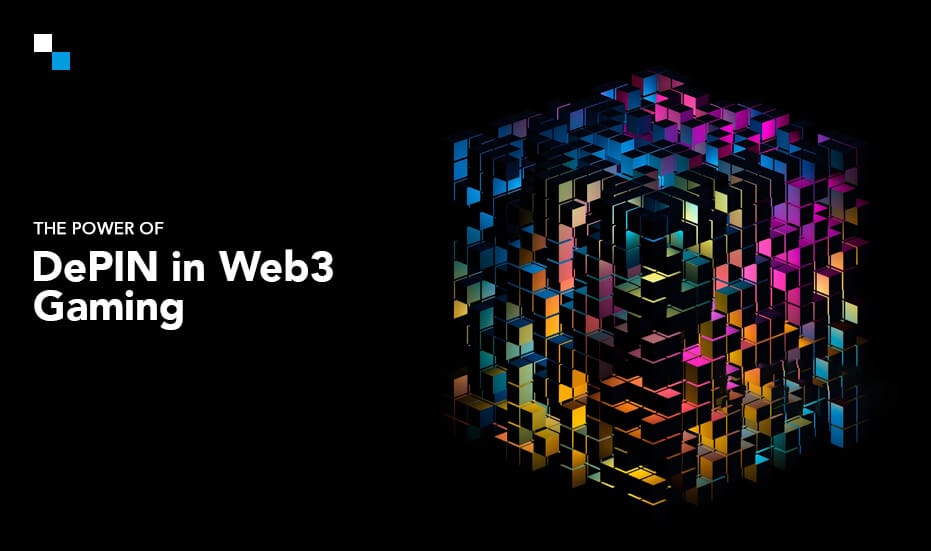In the ever-evolving landscape of gaming and technology, blockchain and cryptocurrency have given rise to a new genre of games – Play-to-Earn (P2E) Crypto Games. These virtual games not only provide players with immersive experiences but also offer tangible economic incentives. Let us gain a comprehensive understanding of play-to-earn web3 games.
The Genesis of Play-to-Earn Crypto Games
Traditional games have always been a form of entertainment, but P2E web3 game development has taken games a step further by introducing a real-world value to in-game assets. This transformation is driven by blockchain, which ensures transparency, security, and decentralization.
Blockchain as the Foundation
Blockchain serves as the backbone of Play-to-Earn Games. Unlike traditional game architectures where data is stored centrally, blockchain decentralizes data across a network of nodes. This not only enhances security but also empowers players with true ownership of in-game assets. Every sword, potion, or character is represented as a unique token on the blockchain, enabling players to buy, sell, and trade these assets.
The Role of Smart Contracts
At the heart of web3 play to earn game development lies the concept of smart contracts. These self-executing contracts are coded on the blockchain, defining the rules and conditions of the game. Smart contracts automate various aspects, including asset ownership transfers, rewards distribution, and gameplay mechanics.
Asset Ownership and NFTs
Non-fungible Tokens (NFTs) are a key component of Play-to-Earn web3 games. Each in-game asset is tokenized as an NFT, making it unique and irreplaceable. This uniqueness is a game-changer, as players truly own their digital possessions. The blockchain’s decentralized ledger ensures the scarcity and authenticity of these assets, fostering a sense of rarity and exclusivity.
Decentralized Finance (DeFi) Integration
Businesses offering web3 gaming platforms choose to integrate DeFi protocols into their platforms during P2E web3 game development. These DeFi protocols introduce financial elements into the gaming ecosystem, allowing players to earn real-world income. Players have diverse opportunities to grow their crypto portfolios whether through staking in-game assets, providing liquidity, or participating in governance.
- Staking Mechanisms
Staking involves locking up a certain amount of cryptocurrency to participate in the network’s operations. In Play-to-Earn Games, players can stake their in-game assets to earn additional rewards. This not only incentivizes players to hold onto their assets but also contributes to the overall stability and security of the blockchain network. - Liquidity Pools and Yield Farming
Liquidity pools are another facet of DeFi integration during web3 play to earn game development. Players can contribute their assets to these pools, enabling others to trade more efficiently. In return, contributors earn a share of the transaction fees. Yield farming takes this concept a step further, allowing players to earn additional tokens by providing liquidity to specific pools.
Challenges and Solutions in Play-to-Earn Crypto Game Architecture
As revolutionary as Play-to-Earn games may be, they come with their own set of challenges. Scalability, high transaction costs, and user onboarding are among the issues developers face. However, the community-driven nature of blockchain development has led to innovative solutions.
- Layer 2 Solution
Experienced development companies offering P2E web3 game development services leverage Layer 2 solutions to address scalability challenges and reduce transaction costs. These are secondary protocols built on top of the main blockchain, providing faster and more cost-effective transactions. Projects like Optimistic Rollups and zk-Rollups are gaining traction in the gaming space, promising a seamless and affordable gaming experience. - User-Friendly Interfaces
User onboarding has been a hurdle for widespread adoption. Recognizing this, companies offering web3 P2E game development services are focusing on creating user-friendly interfaces that bridge the gap between traditional gamers and blockchain technology. Intuitive wallets, simplified transaction processes, and interactive tutorials contribute to a smoother onboarding experience.
The Community Aspect: Governance and Social Dynamics
In addition to a solid architecture, Play-to-Earn games thrive on community engagement. Governance tokens, often integrated into the game’s ecosystem, enable players to participate in decision-making processes. This not only promotes a sense of belonging but also allows the community to influence the P2E web3 game development roadmap. Social dynamics within these games include guilds, alliances, and player-driven economies, creating a vibrant ecosystem where collaboration and competition coexist.
Player-Driven Economies
In P2E Games, players are more than just consumers. They are active contributors to the in-game economy. The player-driven economy is a fascinating aspect where supply and demand dynamics are influenced by real-world market forces. Players can set prices for their assets, negotiate trades, and even establish virtual businesses within the game world. This economic freedom adds a layer of realism and unpredictability to these virtual realms.
Security Measures: Protecting Assets and Ensuring Fair Play
Smart contract vulnerabilities, hacking attempts, and fraudulent activities are some risks that can affect P2E games. Companies offering P2E web3 game development services employ robust security measures, including audits of smart contracts, secure wallets, and two-factor authentication to protect the integrity of the game and the assets owned by the players.
- Fair Play and Anti-Cheating Measures
Maintaining a fair and level playing field is crucial for the success of Play-to-Earn games. Development experts implement anti-cheating measures to prevent malicious activities that could undermine the integrity of the game. These measures may include advanced AI algorithms, decentralized anti-cheat solutions, and community reporting mechanisms. Ensuring a fair gaming environment is paramount to building trust among players and sustaining the longevity of the game. - Future Prospects: The Evolution of Play-to-Earn Crypto Games
The future of Play-to-Earn Games holds exciting possibilities. The integration of virtual reality (VR) and augmented reality (AR) technologies is on the horizon, which promises an even more immersive gaming experience. In addition, cross-chain interoperability may enable players to use their assets across different blockchain networks, which can expand the scope of in-game economies.
Conclusion: Crafting the Future of Gaming
Play-to-Earn games are not just a trend; they represent a paradigm shift in how we perceive and interact with virtual worlds. Creating a solid architecture of P2E games requires a holistic understanding of blockchain, smart contracts, DeFi, and the challenges the industry faces.
Why Antier for P2E Web2 Game Development?
We are a team of creative designers, 3D experts, and experienced blockchain engineers who work together to deliver highly interactive gameplays. Every P2P gaming platform that we deliver is optimized for enterprise-grade security and performance. Besides, pour end-to-end P2E web3 game development services – from conceptualization and development to deployment and marketing – focus on the success of your business.
Connect with our subject matter experts to discuss your business use case.





